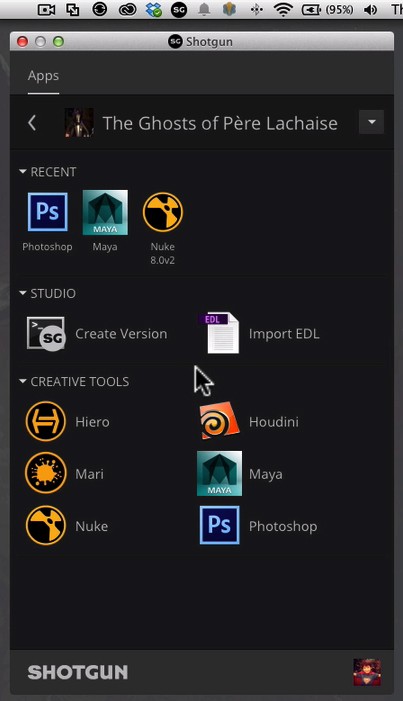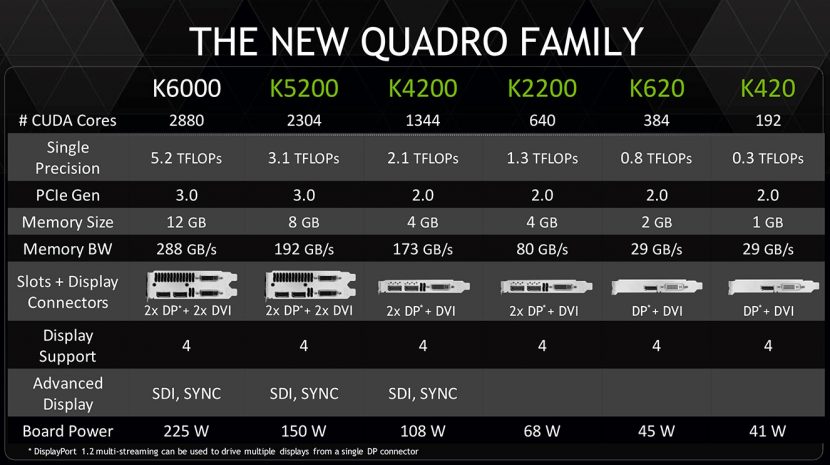Shotgun Software
Shotgun announced some major new additions to its pipeline tools today: a new iOS review app, a new native desktop app, as well as integration with The Foundry’s MARI.
iOS App: Shotgun Review

A new free iPhone app, Shotgun Review, is now available in the app store. It continues recent focus on making the review process better and easier for facilities and their clients. Having easy access to review tools on the go is a natural next step is the reality in production is that vfx supervisors are often out of a facility and need to watch remotely.
The software allows users to view all media in projects, as well as all playlists. Clips are viewed directly in the app and for performance reasons, the clips are downloaded locally before playing so that poor network connectivity doesn’t impact playback. These clips from the review session can also be saved to the iOS library.
Users can feedback on the clips with the pencil tool as well as notes, and these comments are synced back with the Shotgun database so they are available in the project. In addition, access to the iOS device camera also allows the ability to attach camera photos or movies — either existing media from the library or by taking new photos directly from within the app. The app also provides the ability to view the full history of comments and annotations related to to the clip.
Having a native app for review is a big step in accessibility, especially with the local caching of review movies. Obviously, the web-based interface has always been accessible remotely, but the performance and focused features of the optimized review app makes a big difference in usability. In our time trying out the software this week, it performed very well and was more responsive than the web version.
According to Shotgun’s Don Parker, they plan to eventually create a iPad version as well as an Android version, but they want to make sure they get the first release right before building on other platforms.

Native App: Shotgun Desktop
Shotgun is releasing Shotgun Desktop, an OS-native application that runs in the menu or task bar and provides quick access to creative tools such as Nuke or Maya. This way, artists don’t need to open up a web browser and log into Shotgun in order to get up and running. Sysadmins can configure which tools and apps are available for access.
Linux, Windows, and OS X are all supported.
MARI Integration
The Foundry’s MARI is now supported by Shotgun. This means that artists have full access to the suite of Shotgun apps from within MARI, just like all the other supported DCC applications. The Loader, Publisher, and other tools all work as you’d expect.
Shotgun is obviously keen to show that with news of their recent acquisition by Autodesk, they are still committed to working with other software manufacturers in the pipeline. In fact, the entire development was done after the announcement of the acquisition. “We did that work — all of it — post-acquisition,” says Shotgun’s Don Parker. “It was important to us to move as quickly as possible to demonstrate our commitment to an open platform with our blended team and this was a big milestone for us all.” This is a great start, and will aim to continue long term. (ed: this is a correction from earlier stating the work began before the acquisition — which was incorrect)
Building Shotgun support for more DCC apps continues and they’ll be addressing them in order of priority based upon their customers.
NVIDIA expands Quadro Kepler product line & ships VCA
NVIDIA announced the K6000 a little over a year ago and at SIGGRAPH they rounded out the product line with new versions of lower end cards that see significant gains in capability and performance. The product line gets a serious refresh, seeing a substantial increase in the number of CUDA processing cores and memory — some even see a doubling of memory. The product line refresh includes the K5200, K4200, K2200, K620 and K420.

Here are some key comparisons of the new Quadro line with the cards they are replacing:
| CUDA Cores | Memory | Memory Bandwidth | |
|---|---|---|---|
| K5200 | 2,304 | 8 GB | 192 GBps |
| K5000 | 1,536 | 4 GB | 173 GBps |
| K4200 | 1344 | 4 GB | 173 GBPS |
| K4000 | 768 | 3 GB | 134 GBps |
| K2200 | 640 | 4 GB | 80 GBps |
| K2000 | 384 | 2 GB | 64 GBps |
The cards are expected to ship in September.
NVIDIA also announced that they are shipping their Visual Computing Appliance (VCA). NVIDIA VCA is a scalable, network-attached GPU rendering appliance with eight high-end NVIDIA GPUs. Engineered and built by NVIDIA, the appliance was first introduced in March 2014 at the GPU Technology Conference as “Iray VCA.” The NVIDIA Visual Computing Appliance has been renamed to reflect its expanded industry support for GPU rendering across multiple applications.
Pricing is $50,000 in North America, and includes an Iray license and the first year of maintenance and updates. You can read more about the VCA in our report from this year’s NVIDIA GPU Tech Conference.

